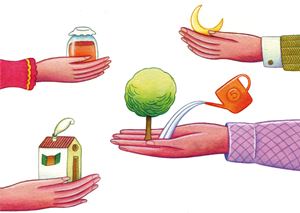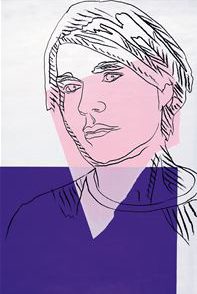Florence has long been the muse of many writers
and poets over the centuries, and looking at the city through the eyes of a
writer can help you see things in an entirely different light. Just in time for
the arrival of thousands of study abroad students to Florence for the fall 2012
semester, Georgette Jupe offers a literary guide to our city. But the good
reads don’t stop here: email us at inbox@theflorentine.net to suggest other books set in Florence that you would recommend to fellow TF
readers.
Even a simple bus ride into the center carries
me past strong historical and personal associations … [that] we know we have
seen before … [yet] we look at as though for the first time,’ wrote R.W.B Lewis
in his famous take on the city of Florence.
Fellow Florence aficionados: who hasn’t felt
that same warm feeling while gazing around our famous sites again and again?
While it may true that all someone needs is access to a computer and a quick
Google search for information regarding restaurants, art exhibits, and
historical sites around town, what about knowledge through the most classical
means-books?
As an avid reader, when I first moved to
Florence to study, I sought out books set in the city to help navigate myself
through the centuries, eras and historical moments that were so important to
its identity. Guidebooks were not welcome in my literary self-journey; instead
I yearned for non-fiction and fiction in which I could dreamily lose myself-and
perhaps gain some insider tips that would impress my Italian friends.
One of the first stories I devoured was one that
I knew would provide loads of interesting facts and interpretations, written by
someone who clearly loved Florence. It is appropriately called The City of Florence by R.W.B. Lewis, a Pulitzer
Prize-winning author who lived in the city on and off for many years (see TF
42). His book combines a ready mix of culture, personal reflection, history,
anecdotes and travel. He takes an introspective look at Florence’s most
enduring landmarks and illuminates the city’s wide-ranging historical and
artistic legacy from the Middle Ages to the present day.
If you have not done so already, enjoy the
pleasure of getting lost in a book in which you recognize local neighborhoods
and historical sites; it will give you the chance to see the city with a fresh
pair of eyes, in an alternative means of discovery.
I offer several suggestions here, just to whet
your appetite for what will certainly be a fascinating process of enjoying
Florence through the eyes of others, past and present.
The Renaissance and Beyond
Those seeking to learn more about the creator of
the famous Duomo should check out Ross King’s captivating Brunelleschi’s Dome, which brings to life the personalities and
intrigue surrounding the construction of the dome. King also opens a window
onto Florentine life during one of history’s most fascinating eras, the
Renaissance. (After you read it, catch up with David Battistella’s ‘Filming
Filippo’ column, which started in TF 149 and was inspired by this book.)
Perhaps you know of the famous Galileo Galilei,
but do you know about his daughter? Dava Sobel’s Galileo’s Daughter is based on 124 surviving letters penned by the
scientist to his illegitimate daughter, Sister Maria Celeste. This fascinating
book broaches the problems of the time, including the bubonic plague. (See more
on Sister Maria Celeste in TF 144.)
Among the many historical fiction and non-fiction set in
Florence, I’ll start by recommending three. To learn more about the Medici,
once the most powerful mercantile family in Florence, read The House of Medici: Its Rise and Fall, by Christopher Hibbert.
This book begins in the early 1430s with the rise of the dynasty under Cosimo
de’ Medici and weaves its way to the 1700s and the family’s last member.
Sarah Dunant’s Birth of Venus (see TF 72), tells the story of a young
Florentine girl who wants to become a painter during the turbulent time in
Florence’s history when the infamous Dominican friar Savonarola terrorized the
city.
Another one for art lovers is The Passion of Artemisia by Susan Vreeland, a
fascinating read following post-Renaissance painter Artemisia Gentileschi’s
violent masterpiece, Judith, and her
eventual triumph as the first woman elected to the Accademia dell’Arte-a
significant feat for that time and place in history. (For more on Gentileschi,
pick up a copy of Jane Fortune’s latest book, Invisible Women, published by the TF Press.)
The Modern Age
Florence is the setting for many romantic plots.
Among them is E.M. Forster’s A Room with
a View, which captures Edwardian social complexities and explores love and
prim propriety in a Florentine pensione.
Perhaps you’ve seen the movie, but have you read the book?
Closer to the present day, The Sixteen Pleasures, by Robert Hellenga, is a fictional account
of a young American woman who helps recover books at the Biblioteche Nazionale
after the famous 1966 flood. She soon finds herself involved in a mystery and a
romantic encounter after discovering a volume of 16 sensual drawings with
equally erotic sonnets. (Art-lovers, take note: see TF 62 for yet another
reason to read this book.)
The Light in the Piazza, a novella by Elizabeth Spencer, follows a woman from North Carolina
and her beautiful daughter who have come to Florence in the 1960s, and the
resulting youthful passion and despair when a love affair brings maternal
instincts to light.
Florence is also the setting for mystery and
crime, some fictional and some all too real. English murder-mystery writer
Christobel Kent wrote several books with Florence as the backdrop for her
fascinating stories. For her Florence-based mysteries, such as A Time of Mourning, A Party in San Niccolò,
and A Florentine Revenge, she uses
familiar neighborhoods (see TF 107 and 41). The infamous ‘Monster of Florence’
committed a series of grisly crimes involving murder and mutilation. And The Monster of Florence by Douglas Preston and
Mario Spezi (see TF 98) is a dark account of the crimes, investigations, and
the authors’ own entanglement in a bizarre prosecutorial vendetta. (Film rights
for their book have recently been acquired.)
Another theme of literature set in Florence is
that of the expatriate. A great book about the realities of leaving one’s
country for a new life and love in Italy and the accompanying cultural
frustrations is The Promise, by
Australia-born author Lisa Clifford (see TF 42).
Don’t forget!
If you are looking for a guide to Florence, pick up a copy of Jane Fortune’s
To Florence con amore, available for
purchase at local English bookshops and online at www.theflorentinepress.com
[This article went to press on September 10, 2012 and was edited online on October 2, 2012.]








